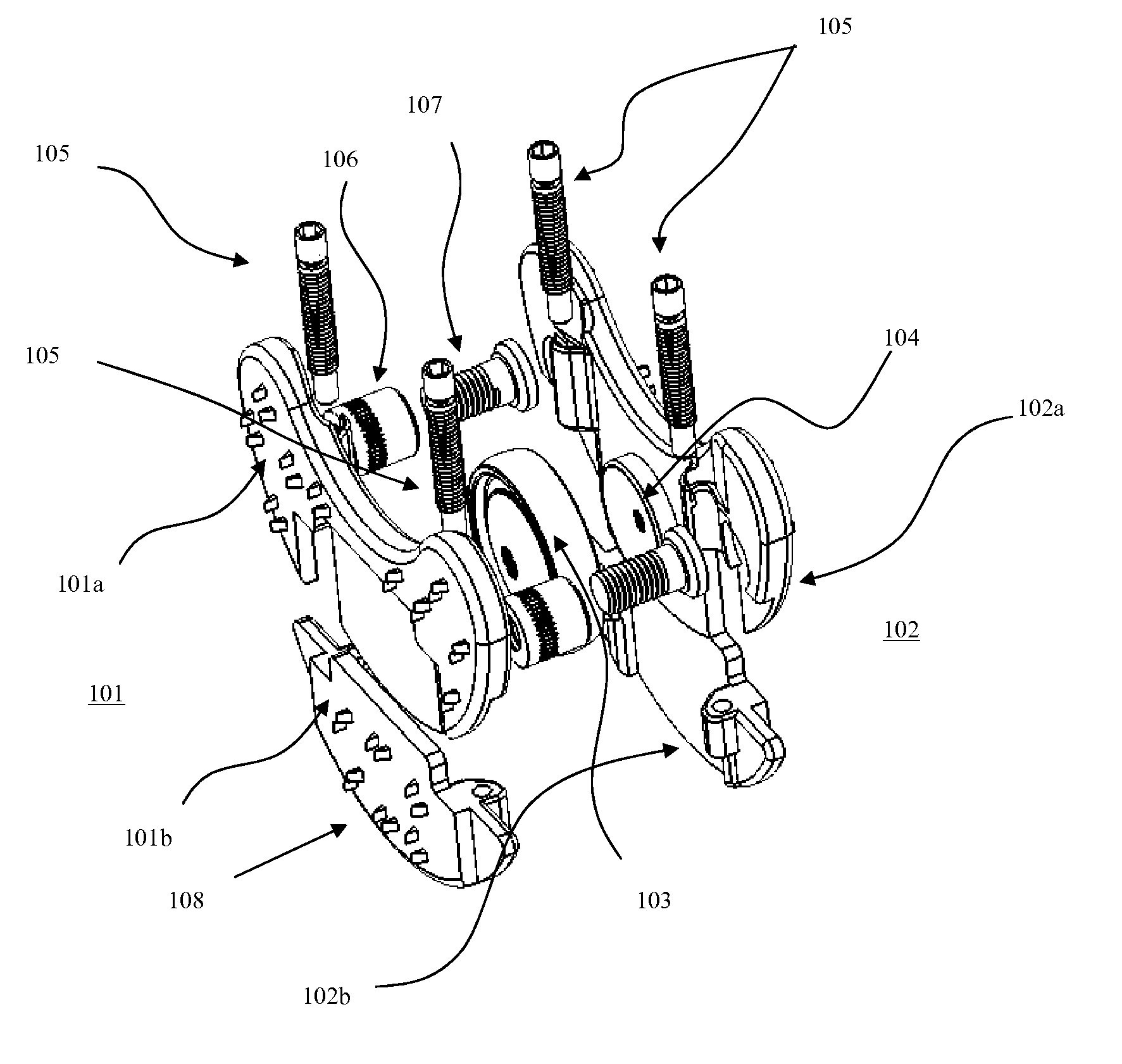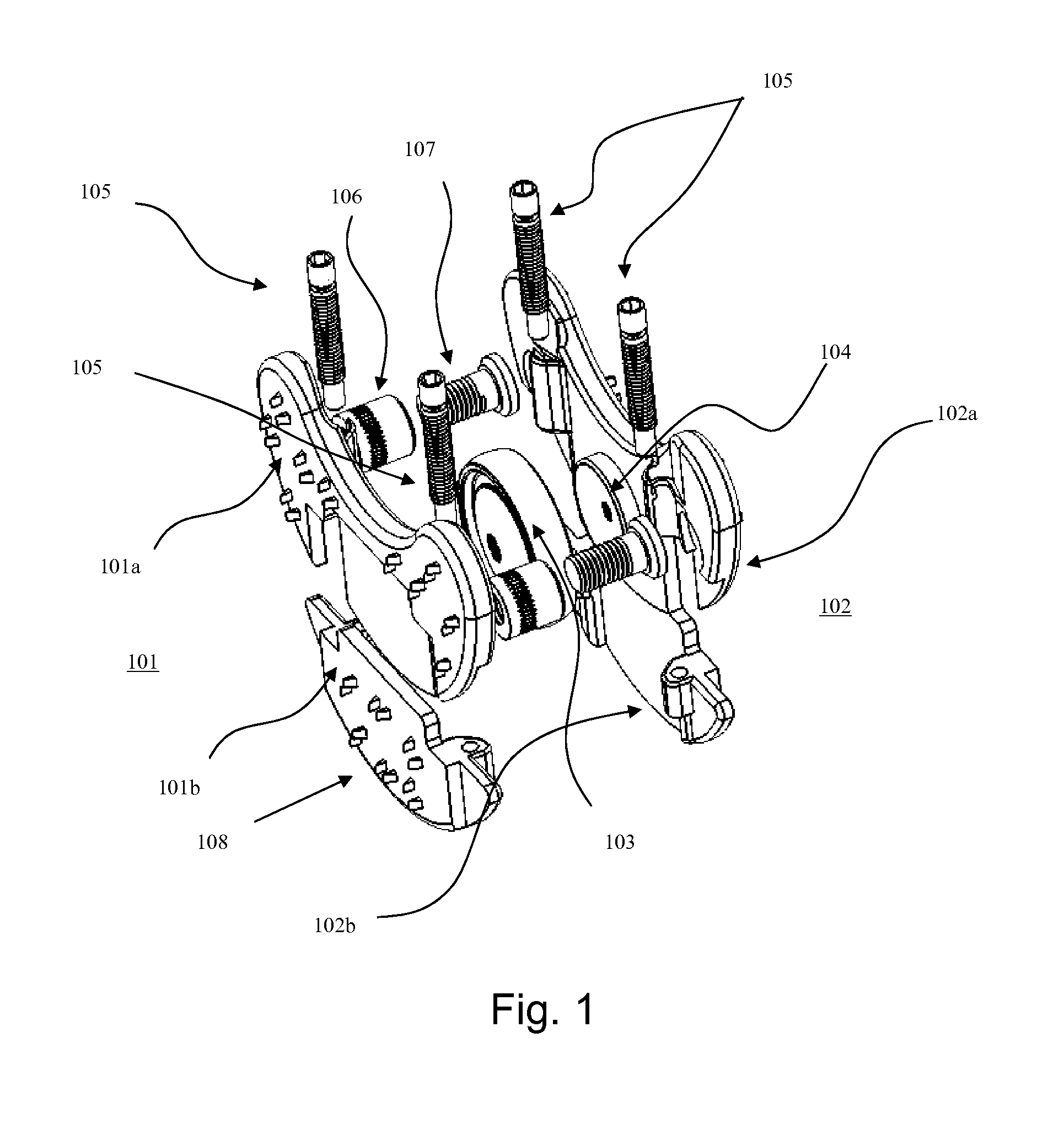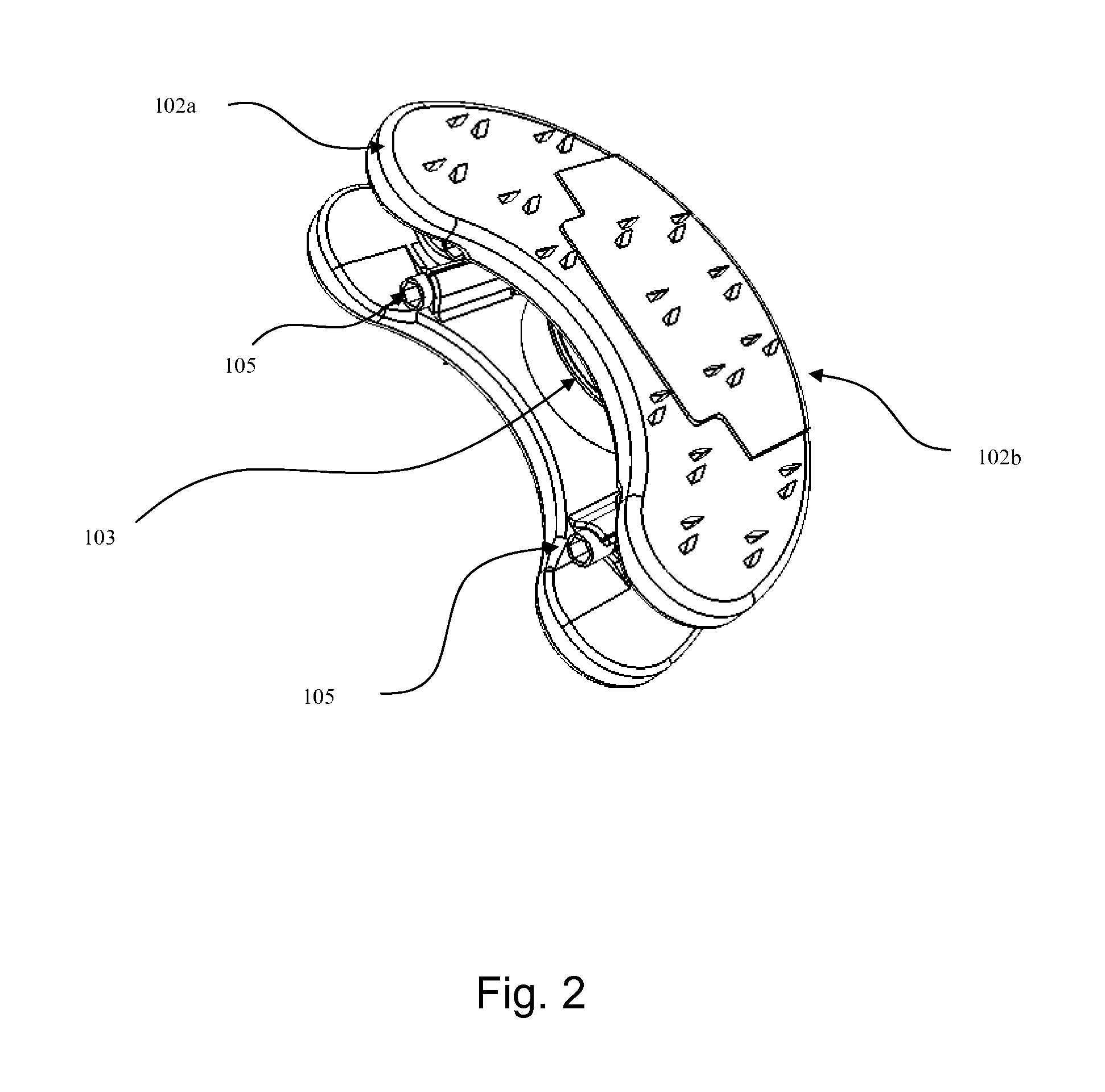Artificial total lumbar disc for unilateral safe and simple posterior placement in the lumbar spine, and removable bifunctional screw which drives vertical sliding expansile plate expansion, and interplate widening, and angled traction spikes
a total lumbar disc and lumbar spine technology, applied in the field of posterior placement total lumbar disc, can solve the problems of limited placement, significant risk of retrograde ejaculation, and limited single-level replacemen
- Summary
- Abstract
- Description
- Claims
- Application Information
AI Technical Summary
Benefits of technology
Problems solved by technology
Method used
Image
Examples
Embodiment Construction
The Medical Device of FIGS. 1-7
[0031]Referring now to FIGS. 1-7, the above described problems can be solved in the lumbar spine by the posterior insertion of a closed PPLTAD in the discs space after the performance of a discectomy. After insertion it is expanded in height (the anterior-posterior direction in a standing patient), and in width (disc space height in a standing patient).
[0032]FIG. 1 illustrates an isometric exploded view of the PPLTAD. It consists of two opposing plates 101, 102 which are preferably titanium or cobalt chromium, each of which is comprised of a dorsal component 101a, 102a and ventral component 101b, 102b. Sandwiched in between the opposing plates 101, 102 is a removable ball 103 which contacts a trough 104 on the inner aspects of both opposing plates.
[0033]The mechanical crux to the PPLTAD height and width expandability are based on the interaction of a bi-functional (height / width) adjustment (BFA) screw 105 with a slotted worm nut 106, and a width adjust...
PUM
 Login to View More
Login to View More Abstract
Description
Claims
Application Information
 Login to View More
Login to View More - R&D
- Intellectual Property
- Life Sciences
- Materials
- Tech Scout
- Unparalleled Data Quality
- Higher Quality Content
- 60% Fewer Hallucinations
Browse by: Latest US Patents, China's latest patents, Technical Efficacy Thesaurus, Application Domain, Technology Topic, Popular Technical Reports.
© 2025 PatSnap. All rights reserved.Legal|Privacy policy|Modern Slavery Act Transparency Statement|Sitemap|About US| Contact US: help@patsnap.com



